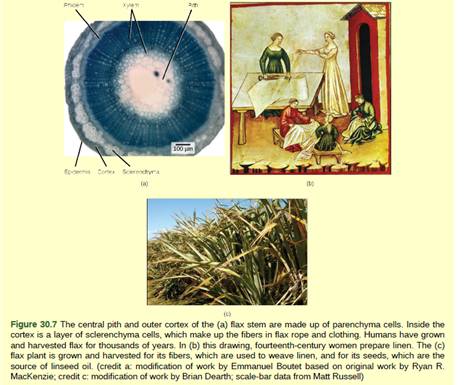
Figure 30.7 Which layers of the stem are made of parenchyma cells?
- cortex and pith
- epidermis
- sclerenchyma
- epidermis and cortex

Introduction:
Parenchyma cells are one of the most common cells found in plants that presents in most of its part as in stem, root, inside leaf, pulp of the fruit etc. these parenchyma cells responsible for metabolic functions like photosynthesis etc.
Answer to Problem 1VCQ
Correct answer: Option (a), cortex and pith is correct answer.
Explanation of Solution
Explanation/justification for the correct answer:
Option (a) cortex and pith. The cortex and pith in central and outer respectively of the stem are made up of parenchyma cells of the plant. Cortex is the outer layer and pith is the central one that is bounded between epidermis and endodermis.
Explanation for incorrect answer:
Option (b), epidermis. Epidermis is the dermal tissue of the plant. It is a single layer of cells that covers and protects the underlying tissues. So, it is an incorrect answer.
Option (c), sclerenchyma. These cells provide support to the plant but most of them are dead on maturity. These cells having secondary cell wall that is thickened with the deposit of lignin. So, it is an incorrect answer.
Option (d) epidermis and cortex. Epidermis is the dermal tissue that is to protect and covers the underlying tissues, while the cortex is one of the parenchyma cells. So, it is an incorrect answer.
The layers of stem which are made up of parenchyma cells are cortex and pith. Hence, option (a) is the correct answer.
Want to see more full solutions like this?
Chapter 30 Solutions
Biology 2e
Additional Science Textbook Solutions
College Physics
Human Anatomy & Physiology (11th Edition)
Concepts of Genetics (12th Edition)
Microbiology with Diseases by Body System (4th Edition)
Genetic Analysis: An Integrated Approach (3rd Edition)
- Which tissue system provides a covering for the plant body? (a) ground (b) vascular (c) periderm (d) dermal (e) cortexarrow_forwardTracheids, vessel elements, sieve-tube cells, and companion cells are components of.______ vascular tissue meristematic tissue ground tissue dermal tissuearrow_forwardPlant regions of continuous growth are made up of dermal tissue vascular tissue meristematic tissue permanent tissuearrow_forward
- Figure 25.24 Which of the following statements about the fern life cycle is false? Sporangia produce haploid spores. The sporophyte grows from a gametophyte The sporophyte is diploid and the gametophyte is haploid. Sporangia form on the underside of the gametophyte.arrow_forwardFigure 25.14 Which of the following statements about the moss life cycle is false? The mature gametophyte is haploid. The sporophyte produces haploid spores. The calyptra buds to form a mature gametophyte. The zygote is housed in the venter.arrow_forwardWhich of the following cell type remain alive in mature plant tissue? •vessel elements •tracheids •sclerenchyma •sieve elementsarrow_forward
- Which of the following plant tissue types can play a role in structurally supporting the plant? Select all that apply Dermal Vascular Groundarrow_forwardDraw the following cells Parenchyma Collenchyma Sclerenchyma Epidermis Corkarrow_forwardLabel the leaf diagram: air space, cuticle, epidermis, guard cells, palisade parenchyma, spongy parenchyma, stomata, and vein. asaparrow_forward
- In the trunk of a tree, the epidermis is replaced by _____ that is produced by the _____. cork cells; cork cambium epidermal; vascular cambium cuticle; vascular cambium wood; cork cambium sclerenchyma; cork cambiumarrow_forwardLabel cells according to their type. (1) parenchyma (2) collenchyma (3) sclerenchymaarrow_forwardThe epidermis___________. Is made of lignified cells that created a protective layer over the surface of a plant Expands throughout secondary growth Generates all trichomes Prevents gas and water exchange with the environmentarrow_forward
 Biology 2eBiologyISBN:9781947172517Author:Matthew Douglas, Jung Choi, Mary Ann ClarkPublisher:OpenStax
Biology 2eBiologyISBN:9781947172517Author:Matthew Douglas, Jung Choi, Mary Ann ClarkPublisher:OpenStax Biology (MindTap Course List)BiologyISBN:9781337392938Author:Eldra Solomon, Charles Martin, Diana W. Martin, Linda R. BergPublisher:Cengage Learning
Biology (MindTap Course List)BiologyISBN:9781337392938Author:Eldra Solomon, Charles Martin, Diana W. Martin, Linda R. BergPublisher:Cengage Learning
 Biology: The Unity and Diversity of Life (MindTap...BiologyISBN:9781337408332Author:Cecie Starr, Ralph Taggart, Christine Evers, Lisa StarrPublisher:Cengage Learning
Biology: The Unity and Diversity of Life (MindTap...BiologyISBN:9781337408332Author:Cecie Starr, Ralph Taggart, Christine Evers, Lisa StarrPublisher:Cengage Learning



